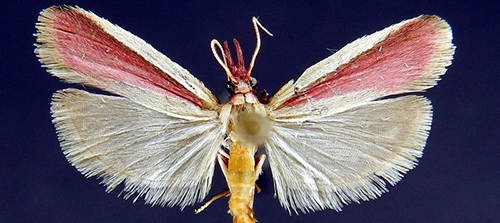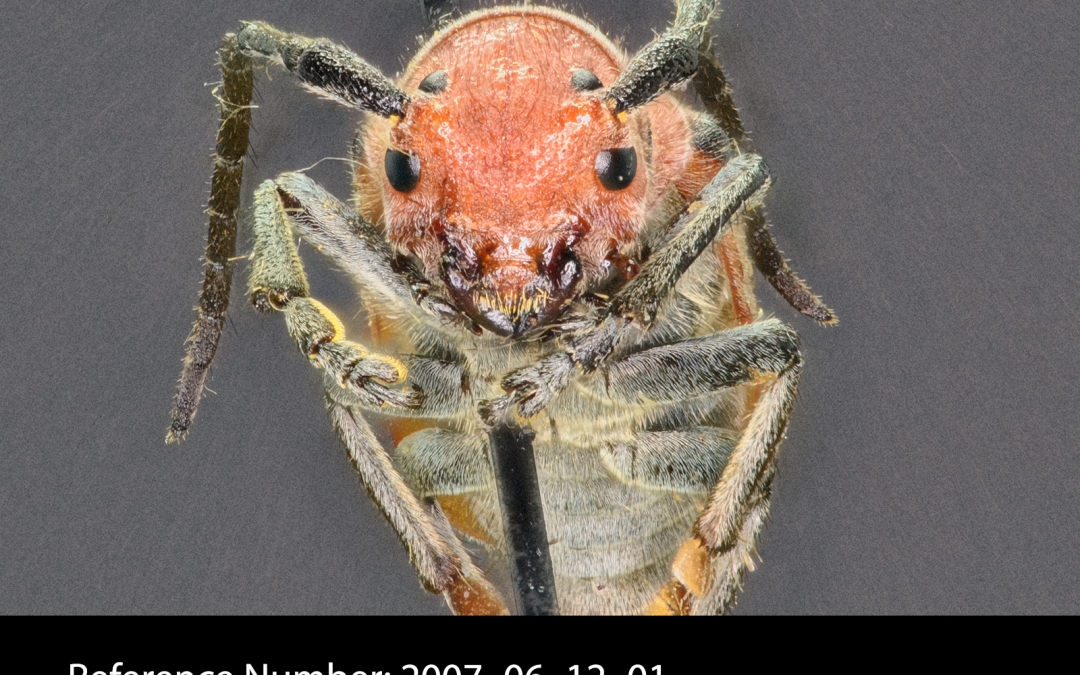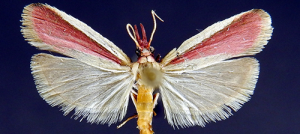Yet another beetle this week. We now examine the family Cerambycidae. Tetraopes tetrophthalmus is our featured insect. It is commonly called the red milkweed beetle and is often found on milkweed plants. If you know a smattering of Greek, you know both the genus and species name mean it has 4 eyes. Many longhorn beetles (family Cerambycidae) have their antenna base close to their compound eye (often the compound eye has a kidney shape due to this placement). These beetles go one step further and the eye is actually bisected by the antenna socket.
Yes, this beetle displays warning colors as an adult. They feed on milkweed which contains a number of toxins. Just like other insects (for example, the monarch butterfly), consuming the red milkweed beetle can make a predator ill and distasteful. If you have ever broken a milkweed leaf, you know they sap is very thick and sticky. These beetles often slice through a major vein on the leaf to allo the sap to drain before actually feeding on the leaf.
The specimen shown here was collected in central Illinois several years ago.


